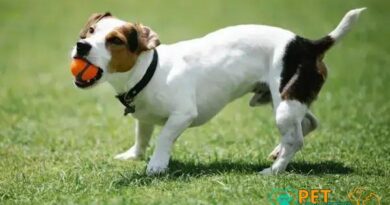What is canine exercise routines
Understanding Canine Exercise Routines
Canine exercise routines are essential for maintaining the physical and mental health of dogs. These routines encompass a variety of activities designed to keep dogs active, engaged, and happy. Regular exercise not only helps in managing a dog’s weight but also reduces behavioral issues that can arise from boredom or pent-up energy. Understanding the different types of exercise routines available can help pet owners tailor activities to suit their dog’s specific needs.
Types of Canine Exercise
There are several types of canine exercise routines that can be implemented based on a dog’s age, breed, and health condition. Common forms of exercise include walking, running, playing fetch, and engaging in agility training. Each type of exercise has its unique benefits, and incorporating a mix can provide a well-rounded fitness regime. For instance, while walking is great for all dogs, high-energy breeds may require more intense activities like running or playing frisbee to expend their energy effectively.
Benefits of Regular Exercise
Engaging in regular exercise routines offers numerous benefits for dogs. Physically, it helps maintain a healthy weight, strengthens muscles, and improves cardiovascular health. Mentally, exercise provides stimulation that can prevent anxiety and destructive behaviors. Dogs that are exercised regularly tend to be happier and more well-adjusted, making them better companions. Additionally, exercise routines can enhance the bond between the dog and its owner, fostering a deeper relationship through shared activities.
Creating a Customized Exercise Plan
When developing a canine exercise routine, it is crucial to consider the individual needs of the dog. Factors such as age, breed, and health status play a significant role in determining the appropriate level and type of exercise. For example, puppies may require shorter bursts of activity, while older dogs might benefit from gentler walks. Consulting with a veterinarian can provide insights into the best exercise plan tailored to a dog’s specific requirements.
Incorporating Mental Stimulation
In addition to physical exercise, mental stimulation is a vital component of canine exercise routines. Activities such as puzzle toys, obedience training, and scent games can challenge a dog’s mind and keep them engaged. Mental exercises can be just as tiring as physical ones, and incorporating them into a dog’s routine can help prevent boredom and promote overall well-being. A well-rounded exercise routine should balance both physical and mental activities for optimal results.
Safety Considerations
Safety is paramount when establishing canine exercise routines. Owners should ensure that their dogs are in good health before starting any new exercise regimen. It’s essential to monitor for signs of fatigue, overheating, or injury during activities. Providing plenty of water and taking breaks as needed can help prevent overexertion. Additionally, choosing safe environments for exercise, such as dog parks or secure backyards, can minimize risks associated with off-leash activities.
Socialization Through Exercise
Canine exercise routines also provide excellent opportunities for socialization. Taking dogs to parks or group classes allows them to interact with other dogs and people, which is crucial for developing good social skills. Positive interactions during exercise can help reduce fear and aggression, leading to a more well-rounded and confident dog. Socialization is an essential aspect of a dog’s development and should be incorporated into their exercise routine whenever possible.
Adapting Routines for Different Seasons
Seasonal changes can impact canine exercise routines, requiring adaptations to ensure the safety and comfort of dogs. In warmer months, early morning or late evening walks may be preferable to avoid heat exhaustion. Conversely, during winter, owners should be cautious of icy conditions and adjust exercise plans accordingly. Providing appropriate gear, such as dog jackets or booties, can help keep dogs comfortable during colder weather, ensuring they remain active year-round.
Tracking Progress and Adjustments
Monitoring a dog’s progress in their exercise routine is essential for ensuring their health and happiness. Owners can keep track of their dog’s activity levels, weight, and overall behavior to determine if adjustments are necessary. If a dog seems bored or is not responding well to their current routine, it may be time to introduce new activities or increase the intensity of their workouts. Regularly reassessing and modifying exercise plans can help maintain a dog’s enthusiasm for physical activity.



